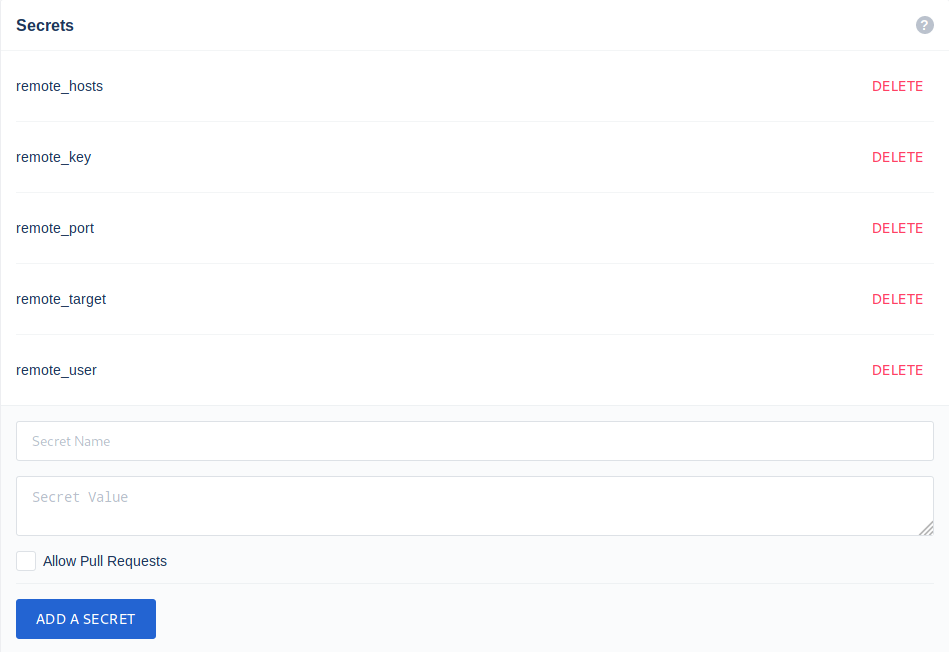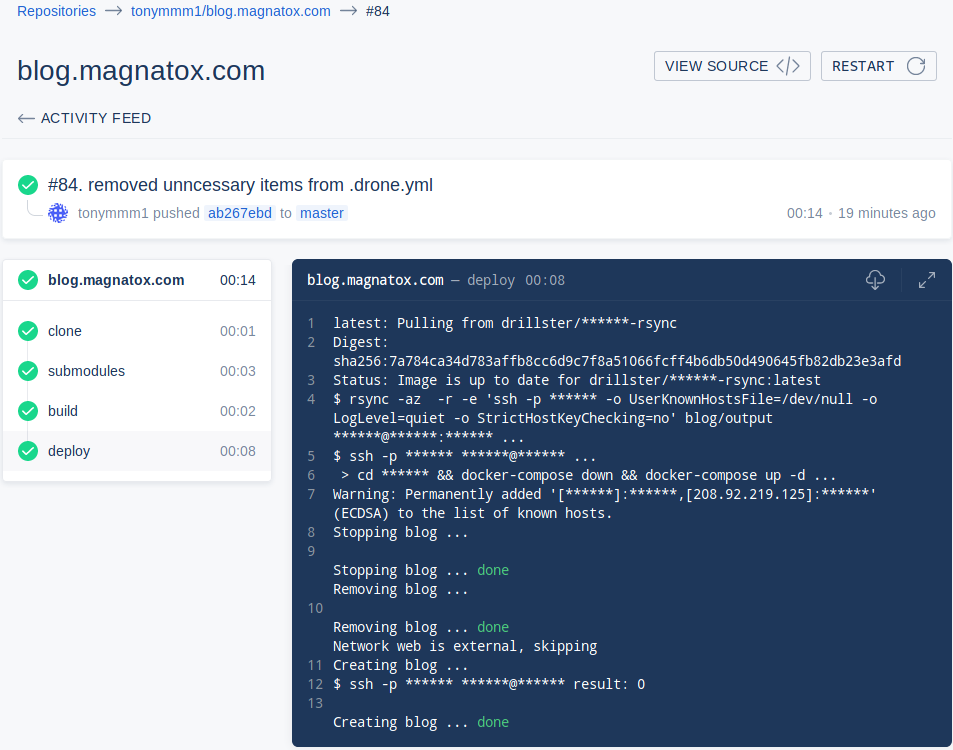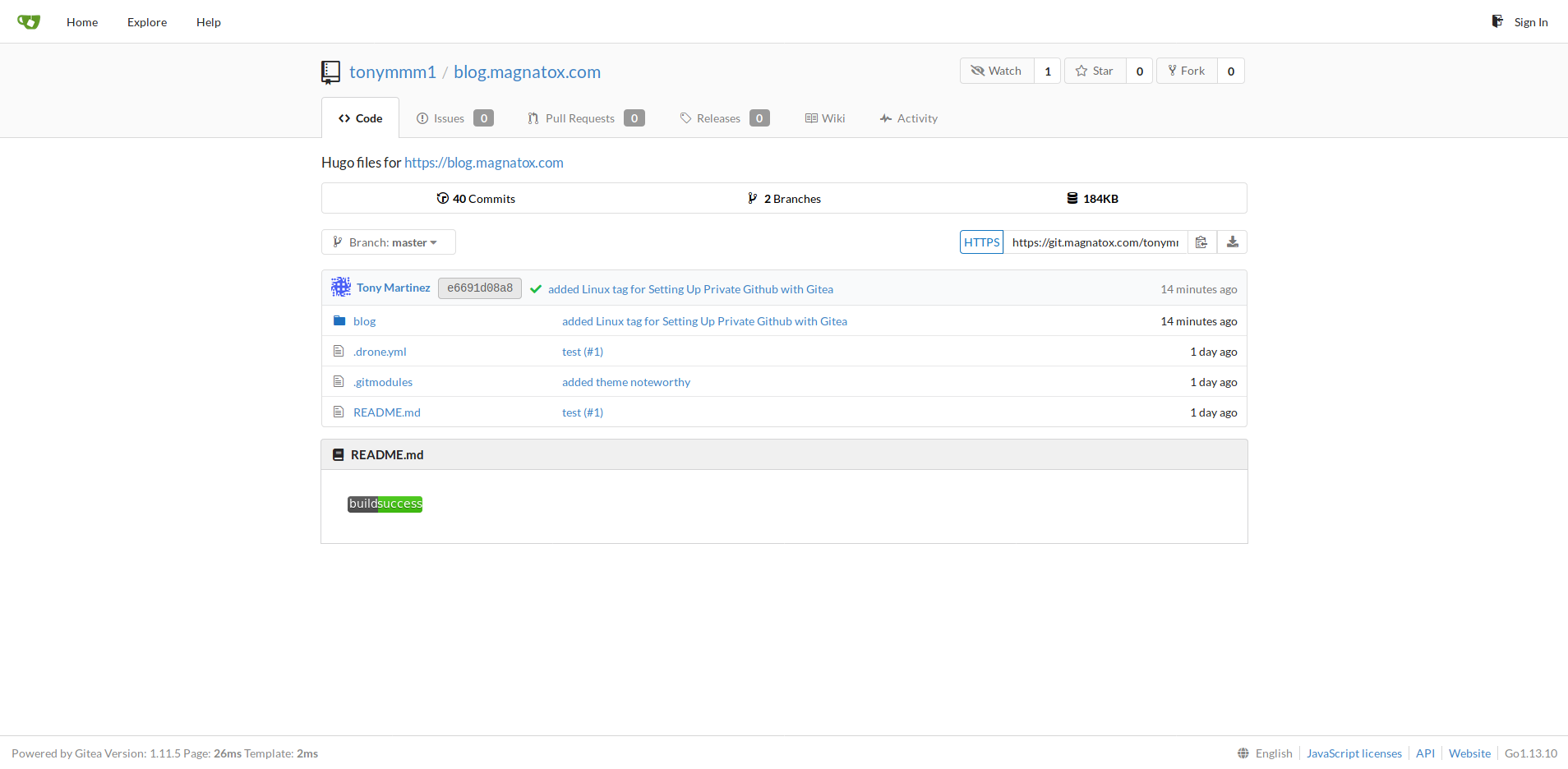Automating Hugo Static Site Websites With Drone and Git Pipeline

Automating Hugo Static Site Websites With Drone and Git Pipeline
This post will demonstrate how to build an automated build pipeline that will automatically rebuild website based on git changes. Based on what is used to maintain this site. This will be a mostly Linux and Docker based post since the applications are hosted as Docker containers but this can easily be applied to virtual and physical hosts as well.
Pipeline Diagram:
[Git] -> [Drone] -> [Drone runner] -> [Remote server] -> [Nginx Service] -> [Site]
Requirements:
Installation and setup:
Step 1: Setup a new Git repository on a platform that is supported.
Step 2: Clone Git repository locally.
git clone url
Step 3: Create a Hugo site within the repo and choose a directory name.
Step 4: Commit site and any files then push to Git repo.
git add .
git commit -m "initial Hugo site files"
git push
Step 5: Make sure that Drone is configured with Git repo and that webhooks have been configured.
Step 6: Configuring Drone Pipeline with .drone.yml.
#.drone.yml
kind: pipeline
type: docker
name: #set name
steps:
- name: submodules
image: alpine/git
commands:
- git submodule update --init --recursive --remote
- name: build-drafts #development build non-master branches
image: plugins/hugo
settings:
hugo_version: 0.70.0
url: #set site url
source: blog/
output: output/
buildDrafts: true #builds draft posts
validate: true
when:
branch:
exclude:
- master
- name: build #production build master only
image: plugins/hugo
settings:
hugo_version: 0.70.0
url: #set site url
source: blog/
output: output/
buildDrafts: false #builds non-draft posts
validate: true
when:
branch:
- master
event:
- push
- rollback
- tag
- promote
- name: deploy #production deploy
image: drillster/drone-rsync
target:
settings: #all secrets below are defined Drone
hosts:
from_secret: remote_hosts
source: blog/output
recursive: true
user: #rsync user
from_secret: remote_user
key: #rsync private user key
from_secret: remote_key
port: #rsync port
from_secret: remote_port
target: #rsync file directory
from_secret: remote_target
script: #rsync commands after initial copy
- cd /home/drone/docker/hugo/blog #remote host docker-compose directory
- docker-compose down
- docker-compose up -d
when:
branch:
- master
event:
- push
- rollback
- tag
- promote
Step 7: Commit .drone.yml to Git repo and make sure repo is activated in Drone.

Step 8: Configure secrets with Drone matching with .drone.yml values.

Step 9: Configure Hugo to run on remote host.
Step 9.1: Create directory.
mkdir -p /home/(username)/docker/hugo
Step 9.2: Make sure to use the directory just created for secret remote_target.
Step 9.3: Configure docker-compose.yml.
|
|
Step 9.4: Setup ssh keys and create a private pair for Drone to use.
echo "public key of drone" >> ~/.ssh/authorized_keys
Step 10: Trigger webhook in git or push a commit to Git repo.


Remote host container status:

